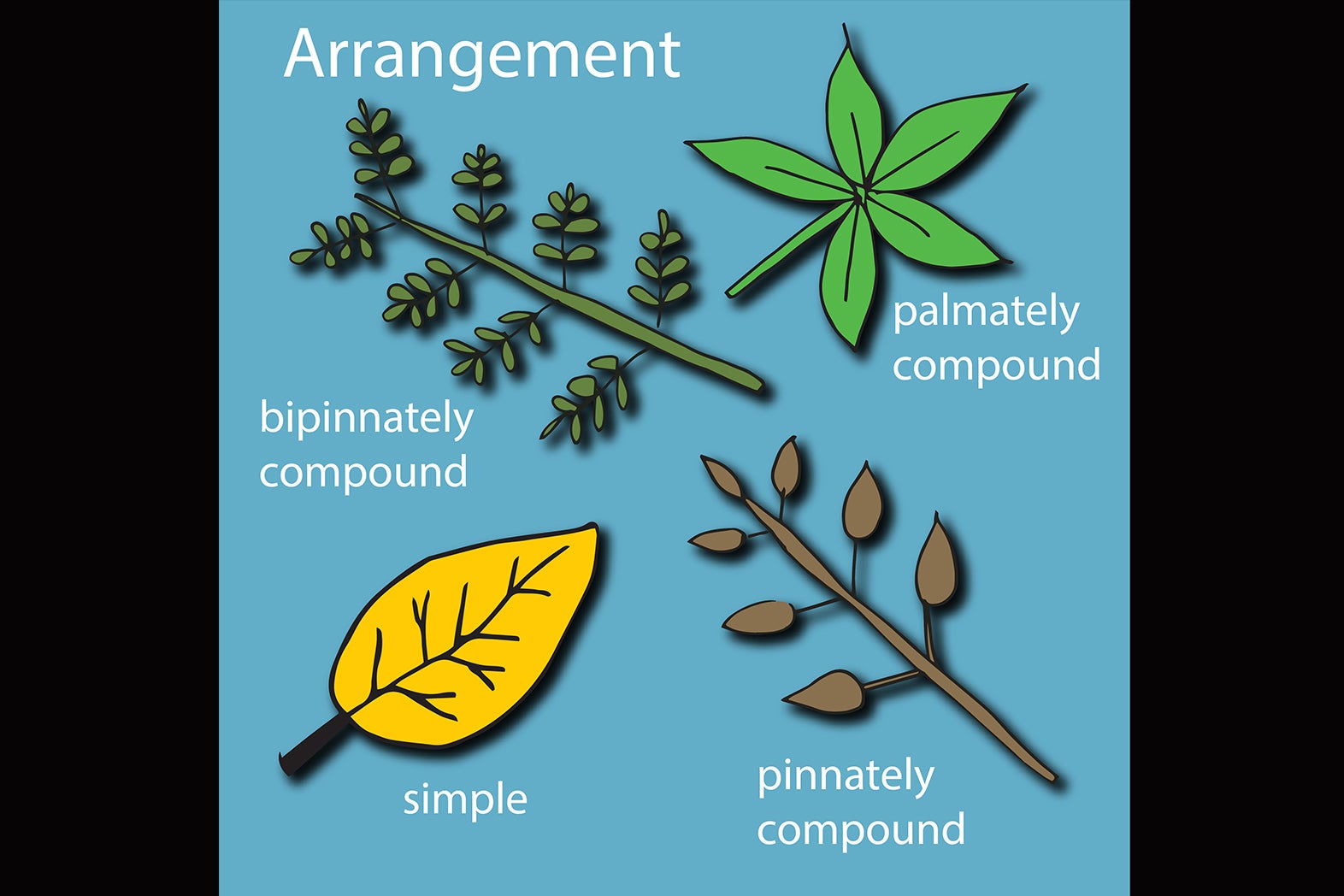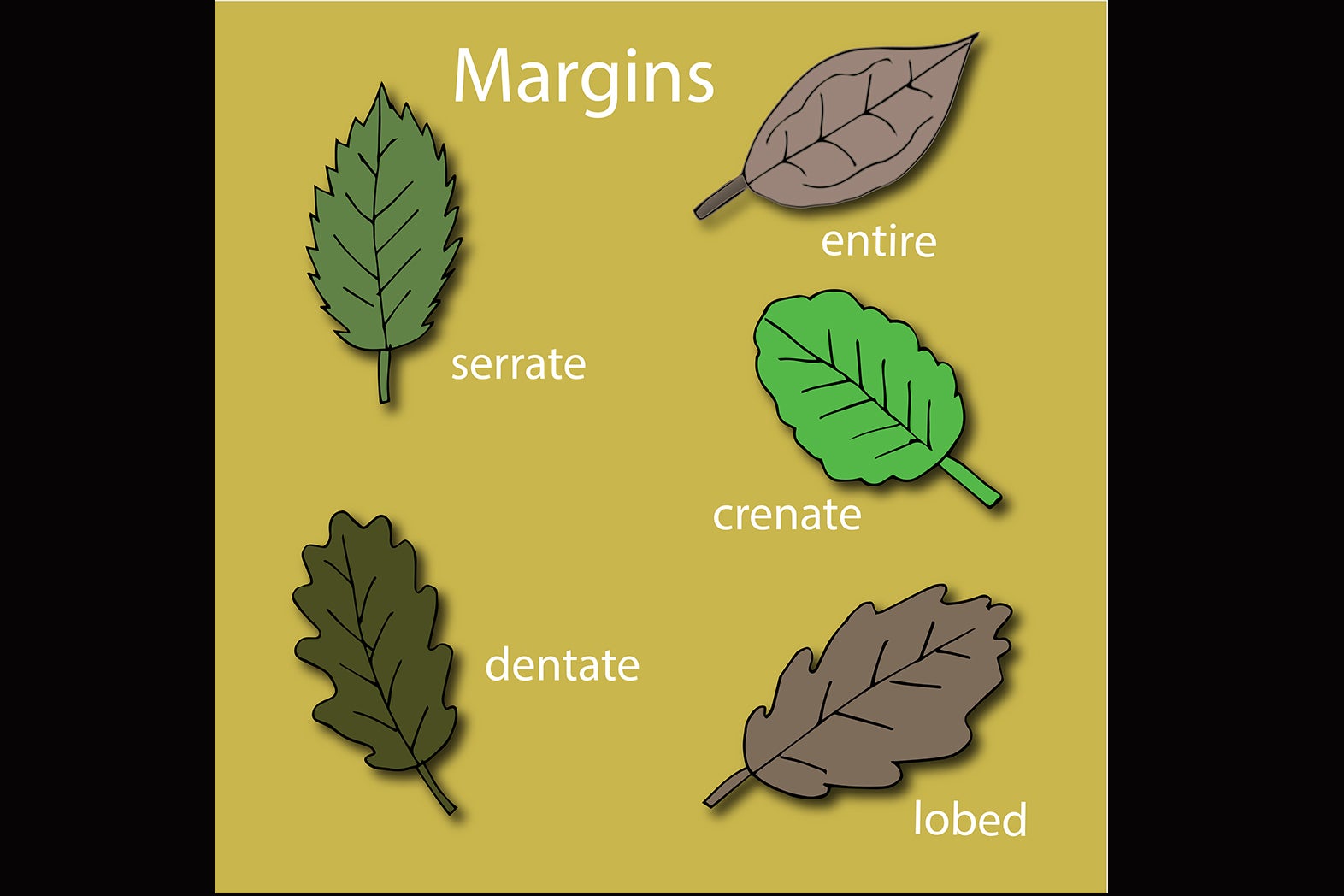
With fall leaves swirling about, there is no better time to understand some of ways botanists examine leaves to identify the plant from which they come. Certainly not exhaustive, these are just some of the common markers.
VENATION
Venation: The arrangement of veins in a leaf is called the venation pattern. Veins bring nutrients and liquid to leaf cells. The illustration gives a few common ones.
PARALLEL: just like it sounds: The veins run parallel except where they meet at the tip and the base.
PINNATE: secondary veins are spaced along a central midvein. Pinnate refers to "ladderlike."
PALMATE: several primary veins diverge from a point.
SHAPE
PINNATELY LOBED: lobes are arranged on either side of a central axis, like a feather.
OBOVATE: egg-shaped, with a narrower end at the base.
PALMATELY LOBED: like fingers on a hand, the leaves spread radially from a point.
LINEAR: very narrow. Technically, linear leaves are so narrow they appear to have parallel sides.
SAGITTATE: shaped like an arrowhead, elongated, triangular.
OVATE: egg-shaped, with broader end at the base.
LANCEOLATE: relatively narrow shaped, broadest below the midpoint and tapering to the tip.
RENIFORM: kidney-shaped.
ARRANGEMENT
This is mainly limited to two basic patterns of division: simple and compound.
SIMPLE: blade is undivided, but may be toothed or lobed.
PALMATELY-COMPOUND: divided into leaflets that radiate outwards from the end of the petiole (the stalk that supports a leaf in a plant and attaches it to the stem).
PINNATELY-COMPOUND: divided into leaflets that are arranged along a stalk-like extension of the petiole like a feather.
BIPINNATELY-COMPOUND: twice compound, with leaflets attached to second-order rachises (Rachis is a main axis of a compound structure).
MARGINS
ENTIRE: margin is smooth around entire leaf edge.
CRENATE: margin has scalloped or rounded teeth.
DENTATE: margin has square or rectangular teeth that point outwards.
SERRATE: These teeth point outward towards the apex of the leaf, look rather like a saw.
LOBED: lobes are similar to big teeth that extend more than about 1/4 of the way to the midvein.
LEAF ARRANGEMENT ON STEM
This is also known as “phyllotaxy.”
ALTERNATE: leaves alternate along the stem, so that only a single leaf is attached at each node. Alternate is a general term, and alternate leaves can be spirally alternate or planar.
OPPOSITE: leaves in pairs along the stem, so that two leaves are attached at each node. Opposite leaves can be in the same plane, spiral, or can be offset by 90 degrees at adjacent nodes (= decussate).
WHORLED: leaves in groups of three or more at each node.
Illustrations by Nicole Elmer, thanks to George Yatskievych, Curator in the Billie L. Turner Plant Resources Center, for his edits.







